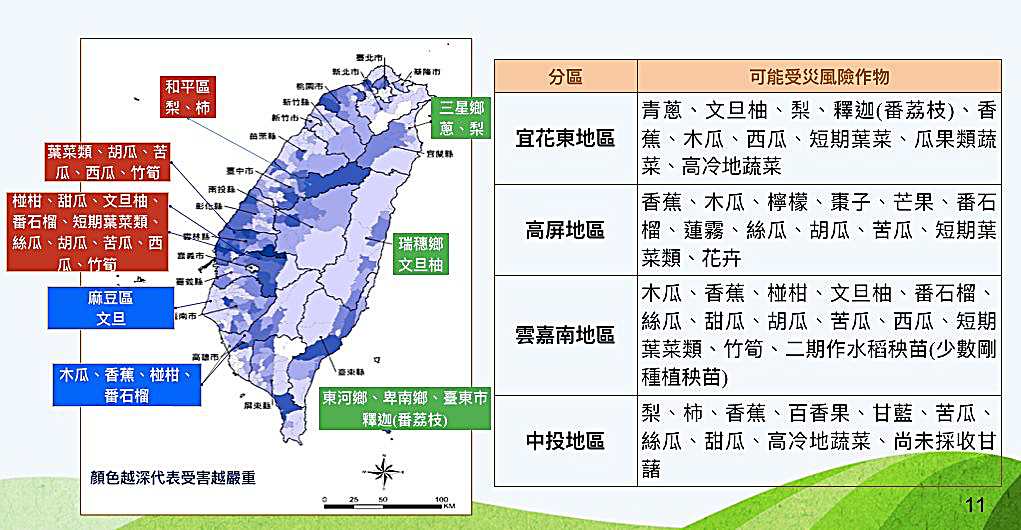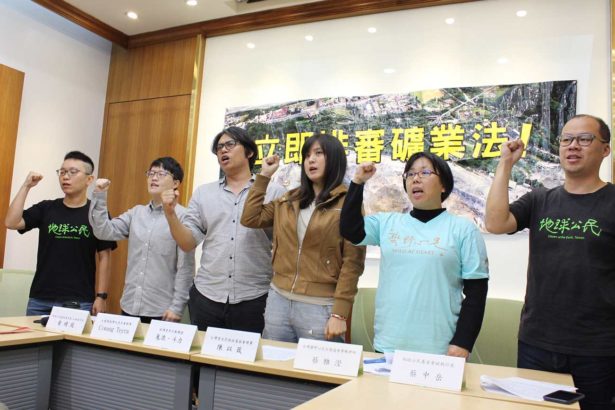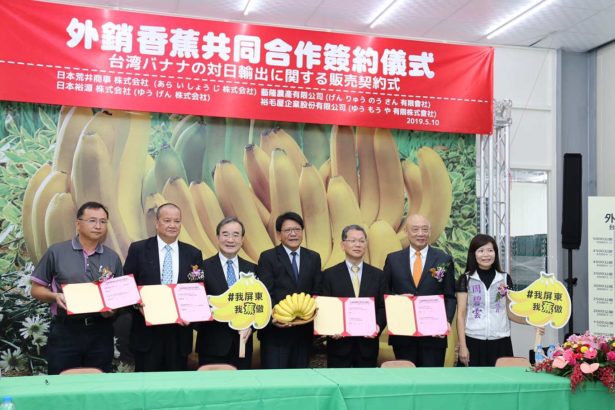It's smarter to eat in the sky! As the flood season is approaching, the Council of Agriculture customizes the meteorology of the producing areas and establishes an intelligent disaster prevention SOP.
Share
Can smart agriculture play a role in disaster prevention? The first wave of "actual combat" in the flood season in May is about to debut. With the advent of the plum rain season and frequent extreme weather, the Council of Agriculture held a press conference today (9) to explain new disaster prevention technologies, from pre-disaster prevention, response to disasters to post-disaster recovery, the introduction of new meteorological technologies, and the establishment of a series of standard processes for disaster prevention.
Take the initiative to prevent disasters by combining the "customized" agrometeorology of the public and private sectors.
Chen Chun-ji, vice chairman of the Council of Agriculture, said that climate change is becoming more and more obvious, making the weather difficult to predict. The Council of Agriculture cooperates with public and private units such as the Central Meteorological Bureau, the National disaster Prevention and Rescue Technology Center (NCDR), and weather risk companies to shift from passive disaster relief to active disaster prevention by collecting and analyzing meteorological information and "customizing" agrometeorology. Chen said that this year's flood season is the first "actual combat" of the whole mechanism, and it will also be applied to all kinds of agricultural disasters in the future.
"pre-disaster Prevention" focuses on the mastery of meteorological information. Chen Junji said that in the past, meteorological information was mainly released by the meteorological bureau, and there would be a time lag in response, coupled with the fact that the release of information was national, which was not so accurate for agriculture that needed more detailed information such as sunshine and soil. In the future, the accuracy and appropriateness of agrometeorology will be improved through "exclusive agricultural weather stations", "customized crop weather forecasts" and "analysis of historical data".


Crops that may be affected by disaster risk in different areas _ provided by the Council of Agriculture
Stabilize the supply and demand of agricultural products, with 3600 metric tons of vegetables as the basic line.
Stabilizing the supply and demand of agricultural products is another project prepared in advance. Chen said that 402.8 metric tons of disaster reserve grain, 3000 metric tons of refrigerated vegetables and 3000 metric tons of root vegetables have been prepared this year. Ke Sheng-chih, head of the planning team of the Agriculture and Food Department of the Council of Agriculture, further added that 3600 metric tons of vegetables will be used as the basic line for the first stage of deployment during the flood season and typhoons, and if the market demand still cannot be met, the emergency import mechanism will be activated.
Expand and promote agricultural disaster insurance
In addition, agricultural disaster insurance will also be popularized. at present, the developed insurance items include pears, Sakya, pineapples, aquaculture, bird flu, agricultural facilities, and so on, while sweet persimmons, dates, guava and yughubao litchi are being developed. in the future, it is planned to include red dragon fruit, barrel mandarin, grape, watermelon, sea bass and woodfish as insurance products.
Read the emotional information to warn of torrential rain disasters and encourage counties and cities to quickly survey disasters with drones.
On the other hand, "response in disaster" immediately marks the disaster area through the "Agricultural disaster Information Network", overlaps and visualizes rainfall, flooding potential maps, and crop production areas with "GIS", and calculates the scale of possible flooding. Coupled with the Meteorological Bureau's latest "Radar precipitation estimation Technology (QPESUMS)" to improve regional rainfall accuracy and assist in early warning of torrential rain disasters.
In terms of "post-disaster recovery", drones will be used to assist in disaster survey (UAV) and estimate agricultural damage. Chen explained that aerial photography of drones is suitable for more unsheltered open-air crops, such as rice, bananas and pineapples. So far, aerial photography and image analysis techniques have been completed for 12 kinds of crops.
Chen further said that in the past, the technology of drones was mainly studied by agricultural experimental institutes, but now the technology has been tested, and it is hoped that the technology can be used everywhere. At the beginning of this year, he contacted various counties and cities, and at present, the counties and cities that have expressed interest are Chiayi and Hualien, and he hopes that more counties and cities will use drones to assist in disaster survey in the future.
Line pictures are sent to farmers' groups to encourage farmers to download app to get the latest information.
Jia Xinxing, director of the Meteorological Environmental Resources Department of Weather risk Management and Development Co., Ltd., said that since the program was launched two years ago, the main purpose of the project is to provide more accurate judgment of the entire agricultural industry through more detailed and customized meteorological information that has a great impact on farmers' livelihood. In the future, the database will continue to accumulate for further analysis, and in addition to technical updates, how to transmit information to farmers is a part that can be scrolled and revised constantly.
Chen Chun-ji also responded to how farmers received information, saying that they would systematically let farmers know through different channels. The most direct and fast channel available is through the farmers' college run by the improvement farm, where each class will set up a Line group to turn information into pictures and send them to groups through the "picture" method that Line is accustomed to. It will also spread information in different channels such as television and radio.
In addition, Chen Junji also encourages farmers to download the "crop disaster Bulletin" APP software, and any farming-related disaster information will be immediately updated in the software. He also revealed that the Council of Agriculture will carry out a "one-item, one-team" plan in the future, so that each crop item will have a dedicated team to study and serve, and in peacetime, the team will provide guidance to farmers in planting techniques, disaster prevention, and so on. integrate the current research capacity of "doing things in their own way" and scattered in different fields.
- Prev

Transformational justice as agreed? The original people of Huantuan approved the delay in the amendment of the Mining Law, and it was "unique" that it did not make a decision 11 times.
Transformational justice as agreed? The original people of Huantuan approved the delay in the amendment of the Mining Law, and it was "unique" that it did not make a decision 11 times.
- Next

Do not rely on political orders, Taiwan banana sales day to achieve another success! Quality management is better than people, banana farmers in Pingtung won the big order.
Do not rely on political orders, Taiwan banana sales day to achieve another success! Quality management is better than people, banana farmers in Pingtung won the big order.
Related
- A course of planting techniques and methods on how to grow carrots
- How to plant the latest tulips?
- Is it better to pick tea in the morning or in the afternoon? When is the best time for tea to be picked? what is the third or fifth tea?
- Launch Yuanxiao Happy combination Haocha + Tea Yuan healthy Taste
- Penghu Tourism "Fireworks 20 Parade with You"
- 2022 West Lake Happiness holds "Digital Revitalization Voucher" and draws iphone13 and laptop.
- Banqiao Fuzhou social houses are designed to change start-up combined with police elimination to create a safe and livable environment
- The convenient measure of "mechanical weeding" in Xinbei has been abused and the Agriculture Bureau has imposed heavy penalties on the illegal land consolidation.
- Changgeng University Joins Hands with Four Memory Factories to Rescue Memory Talent Shortage
- The list of Taiwan's top 100 MVP managers is listed by the Director-General of the Farmers' Association of Sanxia District.

